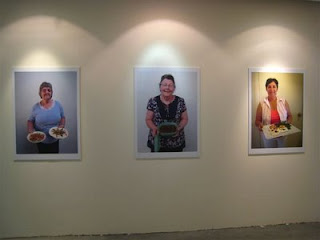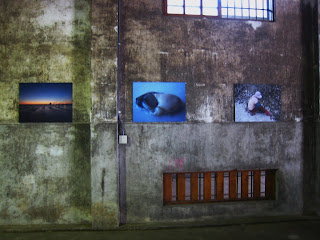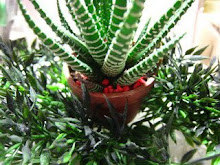A Celebration Exhibition for 10th Anniversary of Shin Leh Yuan Art Space
Eternal Adventureland-A Strategy to let museums reembrace streets, factories and sitting roomsby Huang Hai-Ming
Does the globalized competitive environment of creativity bring about new problems? Are consumer groups and productive groups the same kind? These questions have a tie with ‘art management’, which means we need to reconsider the significance of dispersal or reassembly of artists and creators.
Exhibitions have become more and more like globalized fashion flagship shops. Their strategy is to skillfully juxtapose the most shocking or seducing elements in international eyes with a careful design. What we saw is a transformation from distinct cities to seemingly alike consumer paradises. Exhibitions stand as a representative of these globalized consumer paradises. While the exuberance of consumer paradises made a landslide shift and squeezed the development of localized, temporal-characteristic culture, we need another front line to compensate. It is not a hostile opposition; rather, it is a mutual supplement.
To my opinion, the years of 1998 to 2000 are a watershed of Taiwan contemporary art. Before, artists took inspiration from the society and made works that initiate direct dialogues with the fundamental ranks of the society. But in 1998, the Taipei Biennale ‘Site of Desire’, hosted by Taipei Fine Art Museum, turned the museum into a big mixed business strip. In one way, it still contains the strong ties with the fundamental section of the society. In another way, the exhibition has had a look very similar to commercial spaces. As for the biennale in 2000, ‘The Sky is the Limit’, the exhibition site was like a magnificent globalized supermarket. Works were aligned to manifest the significance among one another with the booth arrangement of consumer goods. Afterwards, we saw many exhibitions in Taipei which claimed to be thematic but showed no subject, no context. They looked like a commercial venue with internationally shocking and seducing elements put together in a skillful design. We witness art exhibitions turned into consumer paradises, and brand name becomes relevant because it guarantees crowds.
When the logic of consumer paradises drew a landslide shift and pushed aside the cultural and artistic development based on locality and epoch, there is a need to recreate a supplemental front. This opposite front line was once established at Huashan Art District, and replaced by another front line while the Association of Culture Environment Reform Taiwan relinquished the management and retreated from Huashan. Hence Huashan Art District changed its original role of manufacturing ideas and artistic creations to a showcase of cultural commodities. However, by the side of or before the production of cultural commodities there must have a manufactory with a mixture of global and localized elements; an adventureland that regardless of commercial principles, to wipe off the sophistication for temporary and maintain a playful workplace for rejuvenated artists.
The attempt of this exhibition is to move the playful workplace back to the seemingly consumer-paradised museums. According to the subtitle, the exhibition means to make the museum reembrace spaces of everyday living, such as kitchens, bedrooms, studios, gardens, factories, streets, plazas, markets and groceries, moving the creation and production from daily life back into the museum again. The first step is to empty the museum as a commercial wasteland.
Using the strategies of interactive involvement and interpenetration as well as collaborative workshop, the exhibition of ‘Eternal Adventureland’ seems to be complicated or even artificial. In fact it is just an imitation of the massive process of building and modifying a society, perhaps also inclusive of the incidental or periodical destruction. Be it the production of cultural commodities or a simply aesthetic pursuit, all needs a well-established platform to communicate, interact and collaborate. Upon an internationally scaled competitive stage, city has to be a creative and playful manufactory in the meanwhile of a consumer paradise.
The substantial platform for exchange of playful ideas:
The exhibition site is conceived as a ruin of several floors. Houses have been dismantled. Only the roads and traces of the dismantled buildings are left. Various artists make their own works and interactions on the site of this ruin with a found object from his/her everyday life and a significant element from previous works.
All the artists come from Shin Leh Yuan Art Space. The art space has accepted more than 100 artists as its members on a biennial basis since the establishment. The curator didn’t select the participative artists of this exhibition. Rather, it is the communication between the curator and the artists assisted with documents, telephone talks and the discussions in person that defined the finalists, and the attitudes of the dynamic construction, the rules of the interactive dialogue, as well as the material, symbols and behaviors for the exhibition. On two weeks before the opening, the location of each partial element is confirmed by communication in situ. These locations represent a starting point of an unfolding multiple dimensions or the nodes of a network, and from where, all kinds of development, intertwining, modification, transformation, construction and deconstruction are activated.
Then the curator calls for interdisciplinary art groups who are willing to enter the exhibition space and create dialogue with the changing artworks in the site. The major concept and the on-going accumulation of materials and ideas will be provided by the curator to facilitate the art groups shaping their own ways and contents of participation.
From installation days to the opening is the first stage of the exhibition. Afterwards, the artists will come to the site to make four revisions respectively on May 17th, 24th, and June 7th, 21th. Artists will be working from 9am to 2pm. Between 2 and 4pm, interdisciplinary scholars and experts are invited to give inspiring opinions and talks, and various interdisciplinary art groups to give performances that communicate with the presented works.
The virtual platform for exchange of playful ideas:An Internet blog is established before the exhibition opening, in which all the contents about the exhibition are presented and updated. All artists and audiences are welcome to join the continuous construction on this blog. Along with the opening, a book is published which contains the history of Shin Leh Yuan Art Space, the related discourses, and the latest information of the exhibition. A compilation DVD will be published after the exhibition, which contains the documentation of the installation, the opening and the four revisions as well as the interdisciplinary talks and performances. Critical texts are included as well. The Internet blog will remain the role of a communicative platform for succeeding discussion and dialogue.
















































